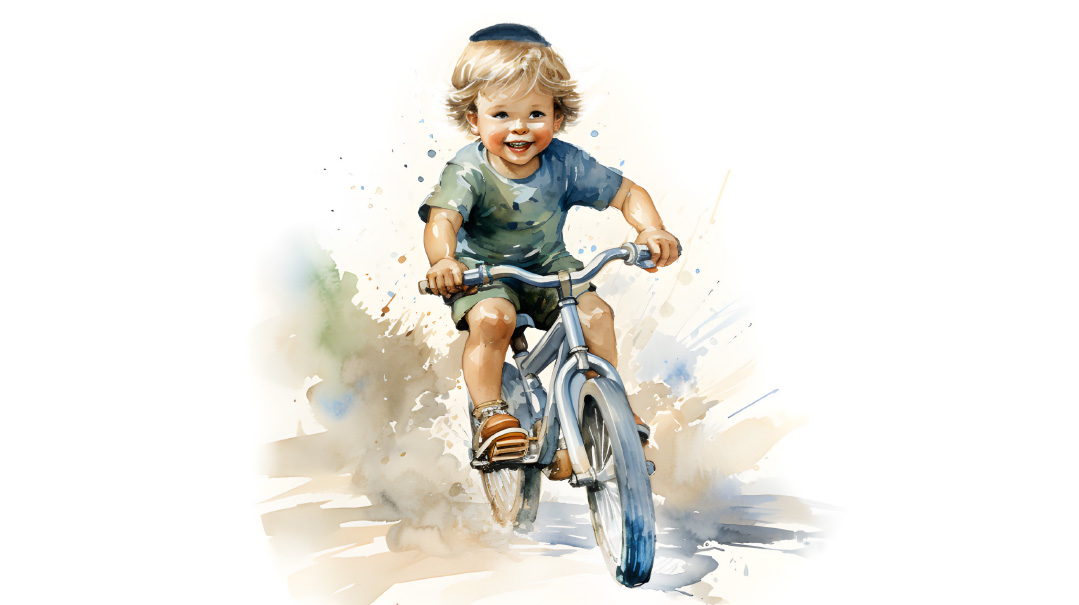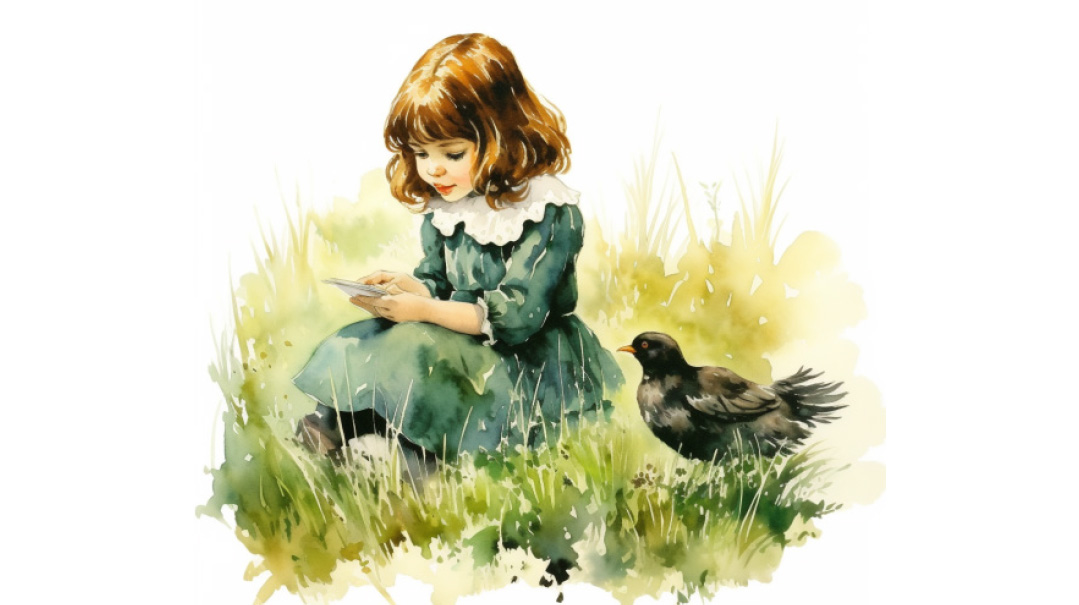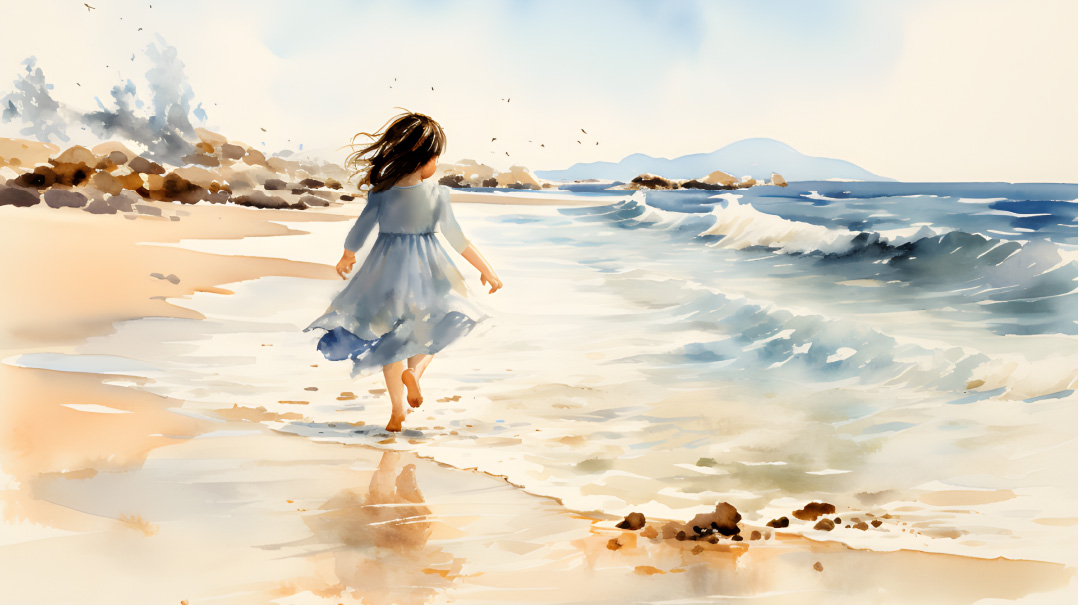By Any Other Name
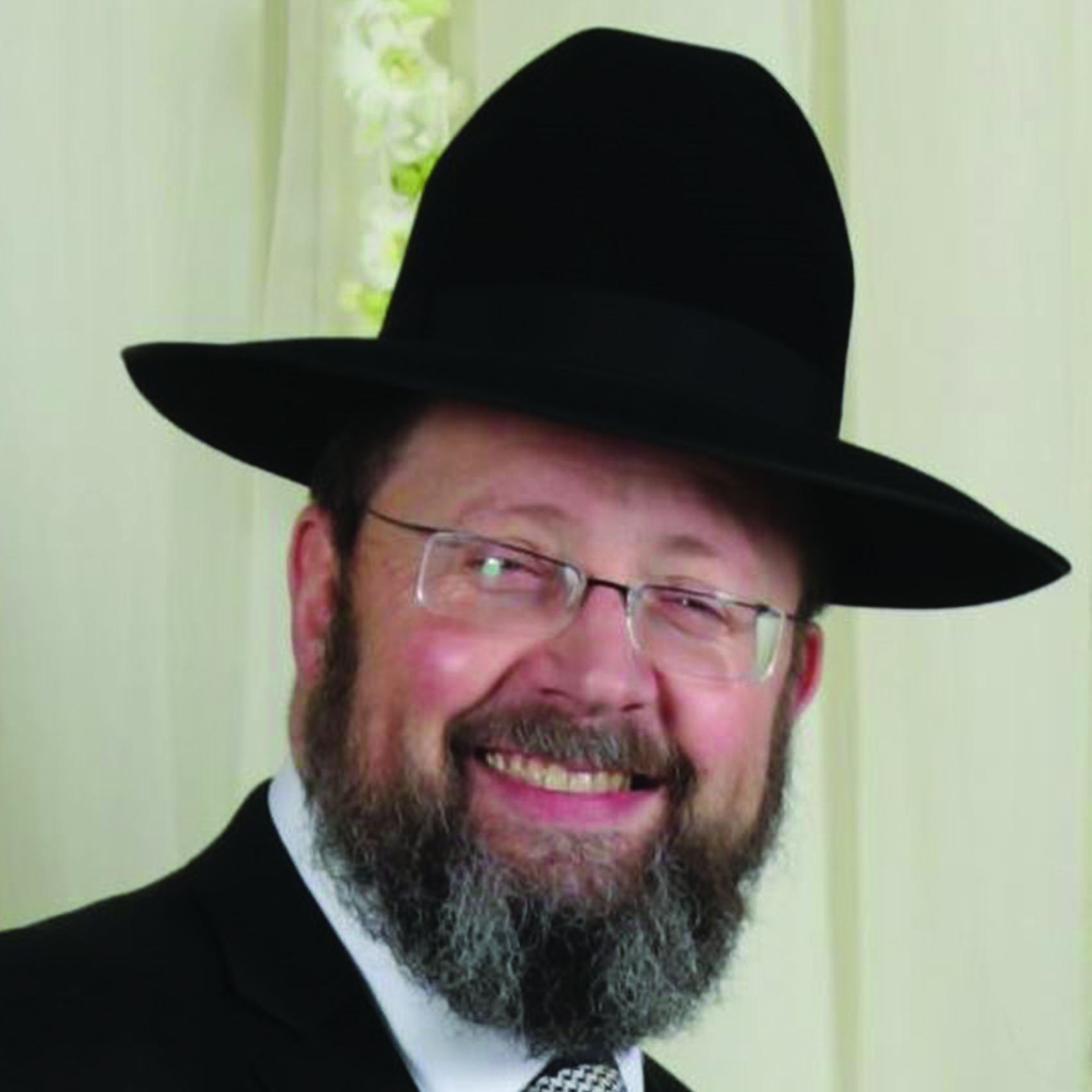
The enjoyment we experienced there was in inverse proportion to its physical condition

IN the Gemara, “sagi nahor” literally means “much light,” but refers to a blind person. “Lashon sagi nahor” — “an expression of much light” — therefore refers to a phrase that means the polar opposite of its literal translation.
That may be the best way to explain the name “Four Roses Bungalow Colony,” because I assure you that in a million years, no one could find a single rose in that place, let alone four. Four Roses, where I spent my summers as a child 45 years ago, was a motley collection of some 30 hovels situated on the perimeter of a forlorn property in the Catskills. Yet, the enjoyment we experienced there was in inverse proportion to its physical condition. In fact, its dilapidated state — which somehow reflected the honest and kind but curmudgeonly personalities of its owners, Mr. and Mrs. Rozsa — determined and defined its occupants.
It wasn’t that the chevreh was poor; in fact, some were quite well off. But there wasn’t much stuff in Four Roses. It had, in spades, however, a much more valuable commodity — camaraderie. My enduring image of Four Roses is a great circle of beach chairs, populated by mothers shooting the breeze, speaking in rapid-fire French peppered with peals of hysterical laughter that rippled through the humid Catskills air. (The women who didn’t belong to the two extended French-speaking families at the colony spent their days scrambling for an explanation of the latest joke.)
Chazal say, “Marbeh nechasim, marbeh da’agah — increasing one’s possessions increases one’s worries” — and the families who stayed at Four Roses can affirm that the inverse of that rule is also true. No stuff, no stress.
For us, the colony was the most carefree place in the world.
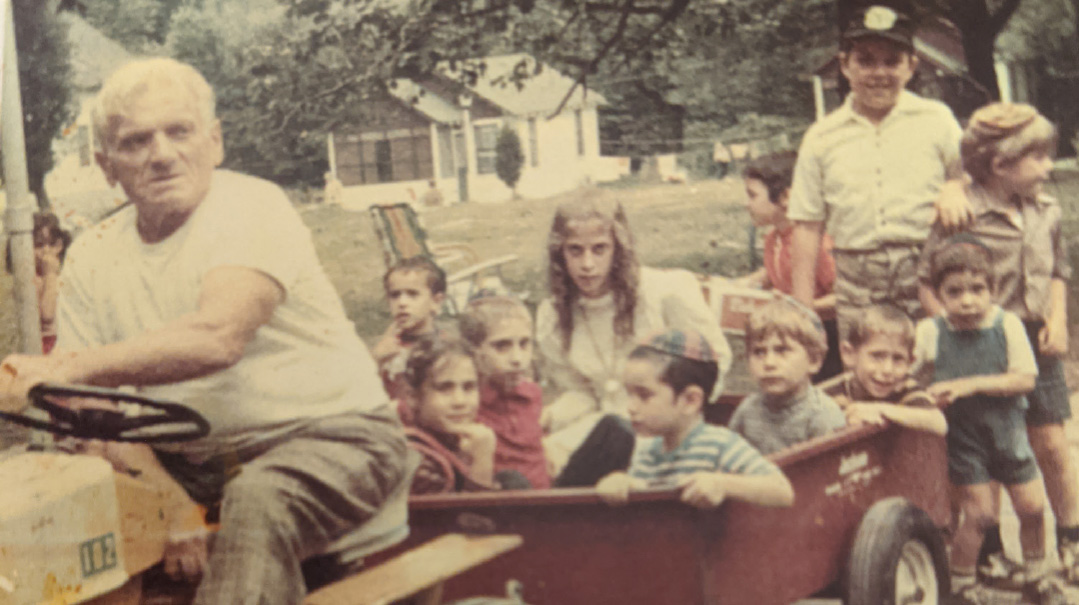
Mr. Rosza of Four Roses
I
spent nine idyllic summers in Four Roses, from 1966 to 1973. The daily schedule — for the boys at least — was pretty simple: learning groups in the morning until 12, including recess, and then… whatever we wanted. I don’t remember having any counselors or formal activities; we just winged it, hour after hour, day after day, for eight blessed weeks. Invariably, there was swimming, punchball, baseball, Capture the Flag, and a yearly play, all arranged by the boys, for the boys.
(Punchball is an almost-entirely extinct sport nowadays. My friend Shmuel L., who is four years my senior and now a Flatbush rosh yeshivah, was the best Four Roses punchball player by far. When I was eight years old, I turned to him for advice on improving my abysmal punchball-hitting skills. He sagely suggested that for better results, I insert my thumb into my fist; according to the laws of physics, this would generate more force. I spent that entire summer painfully forcing my stubbornly inflexible thumb into my fist. The result was an apparent refutation of the laws of physics, because there was no discernible improvement whatsoever.)
Nowhere was the colony’s lashon sagi nahor theme better expressed than the merry-go-round, which was surely a source of more misery than merriment. The merry-go-round was a hexagonal metal frame with thick metal spokes radiating from a center pivot. Wooden planks, fixed onto the outer perimeter, served as the bench; for some reason, the entire frame was set on an angle. Kids would sit on the frame and beg adult passersby to spin the carousel as fast as they could. Eventually some kind fellow would acquiesce, and predictably, as the thing was spinning at (what we thought was) great speed, someone would slip off — at the peak of the orbit — and fall into the center of the spinning mammoth.
Inevitably, the child would panic and try repeatedly to sit up and get out, but instead would be bopped repeatedly on the head by each successive spinning spoke. O the misery of the victim… but O the merriment of the onlookers! (My sensitive sister insists that the term “merriment” in this context is cruel and heartless. I agree wholeheartedly.)
Who can forget how Pinchus B. would climb the frame of the swings? When Mr. Rosza caught him, he would get on the PA system and call out in his heavily accented Hungarian English, “Pinkas! Get off the swing or I’ll breaka your neck!”
Three notable incidents will enhance the image of Four Roses.
First, one fine day, Jonathan, the owner’s 13-year-old grandson, who, like his grandparents, was not frum — but nevertheless an integral part of our group — told us that Meir Kahane’s Jewish Defense League had a training camp across Route 52. Its burnt-out, bullet-ridden bungalows can still be seen today; back then, it was in full operation, and Jonathan offered to take us there.
Crossing Route 52 was strictly forbidden; cars fly down that road at 60 miles an hour. But an adventure is an adventure, so some ten of us agreed to secretly convene on the baseball field and sneak across the road to explore the camp. What we were thinking is anyone’s guess, but I’m not sure there’s much rational thought in the mind of a 12-year-old when the excitement of adventure looms.
One by one, we crossed the highway between speeding cars and entered the forest. We scrambled up a hill, passing a cave which Jonathan assured us was a bear’s hibernation den (who were we to argue?), and reached the top. We gathered, caught our breath, and were about to head further toward the camp when — Pow! Pow, pow! Gunshots! They were shooting at us, and there we were, bullets whizzing by.
Who knows why? Perhaps we had wandered into their shooting range, perhaps they thought we were animals or a band of marauding teenage terrorists. Either way — and for this I am eternally indebted to him — Jonathan had the presence of mind to yell, “Everyone, drop to the ground!” We did, and then slid, tripped, and ran as fast as we could down the hill, out of the forest, across the 52 to our mothers’ comforting embraces. After reassuring us that we were still alive, they let us have it but good. (I don’t recall the punishment, though, because as far as I was concerned, the adventure was still well worth it.)
Another lazy Friday afternoon, my 13-year-old friend and I decided, again illegally, to ride (or rather fly) our bicycles down an extremely steep country road that abutted the colony. (I would reveal my friend’s name, but he now stands at the helm of a well-known yeshivah and might not appreciate the publicity.) The road was so very steep — it was about three-quarters of a mile straight down — that once you committed to descending, you simply had to remove your feet from the pedals and let them spin freely because you couldn’t possibly keep up with their rotational velocity.
As we headed out, I saw that my two younger brothers, aged eleven and seven, had decided to tag along, much to my chagrin and annoyance. The Gemara says, “Ein adam chotei v’lo lo — no one sins for anyone other than himself” — and I had no inclination to take responsibility for their misconduct.
If they want to follow us, it’s their problem, I thought.
About halfway down, I spotted a car coming up the hill. I must have (shockingly) felt some modicum of brotherly achrayus, because I turned back toward my brothers to tell them to move to the side of the road. Instead, I saw the 11-year-old lying on the side of road, moaning in pain, his mangled bike next to him. I yelled to my partner in crime to come back, somehow managed to stop the bike, and then ran up the hill to my brother. It was an awful sight: He was bleeding from his mouth, crying, a real mess. I turned away in horror, only to discover the seven-year-old in a similar same position just a bit further up the road! He, too, had “ditched” his bicycle and was lying in a heap on the side of the road, blood pouring from his head (the term “helmets” had not yet been coined).
We had two young injured boys and were looking at a 15-minute hike up the hill to the colony: We needed a plan.
“I’ll run with my bike until I reach flat ground and then I’ll ride for help,” said my friend, hoisting his small bike up. With that, he was off.
Meanwhile, we three brothers started hiking up the hill, hoping to meet a car that would bring us back to the colony. The younger one, who looked worse, was strangely quiet, which was very scary (head wounds bleed a lot but aren’t necessarily dangerous), while the 11-year-old was howling in pain because, as we later found out, he had cracked his two front teeth.
No car ever came. Instead, we three made that terrible trip up the hill on foot. Upon arriving, I found my mother, who took my brothers to the hospital. (Avner W. remembers her typical nonplussed reaction when she saw them: “Nu, nu. They’ll live.”) The younger one needed stitches and came home shortly, whereas the older one endured a three-day stay in the hospital.
Sometime later, I went to find my friend.
“Why didn’t anyone come for us?” I asked.
He told me, in all innocence, that he went to call my mother, but it was ladies’ hour in the pool, and all the women were there, so he of course couldn’t go in. Since there were no men around, he did what any healthy yeshivish bar-mitzvah-age bochur would do in that matzav — he went to play punchball.
I totally understood.
The third story is somewhat embarrassing. But for your reading pleasure….
I was ten years old, and on Tishah B’Av afternoon, I went to catch frogs together with my friend Aron B. As every Four Roses kid knew, the best place to catch frogs was in a place generously referred to as “the swamp.” Aside from the awful smell — I’m not sure why it wasn’t covered — the place looked exotic, surrounded by tall weeds, trees, and boulders. You could almost imagine it was the Everglades.
I assumed the best frog-catching position, stomach down on a boulder, and waited for my prey to emerge. It did, and as I stretched and reached to seize the critter, I slipped off the boulder — and slid headfirst into the swamp. I was an accomplished swimmer, but the viscosity of whatever made up the swamp did not allow for an easy exit. Aron B. literally saved me from death (and from a most humiliating obituary) by pulling me out of the yevein metzulah, this upstate-New York Abyss of Despair.
I tottered back to the bungalow, desperately avoiding all human contact. My mother took one look at me and hollered that I get into the shower, to which I — ever the halachist — protested, “But it’s Tishah B’Av!”
She would have none of it (“Into the bath now!”), and when I emerged ten minutes later, she was not yet mollified (“Back in there!”), so I returned to the shower, leaving only once she departed the bungalow.
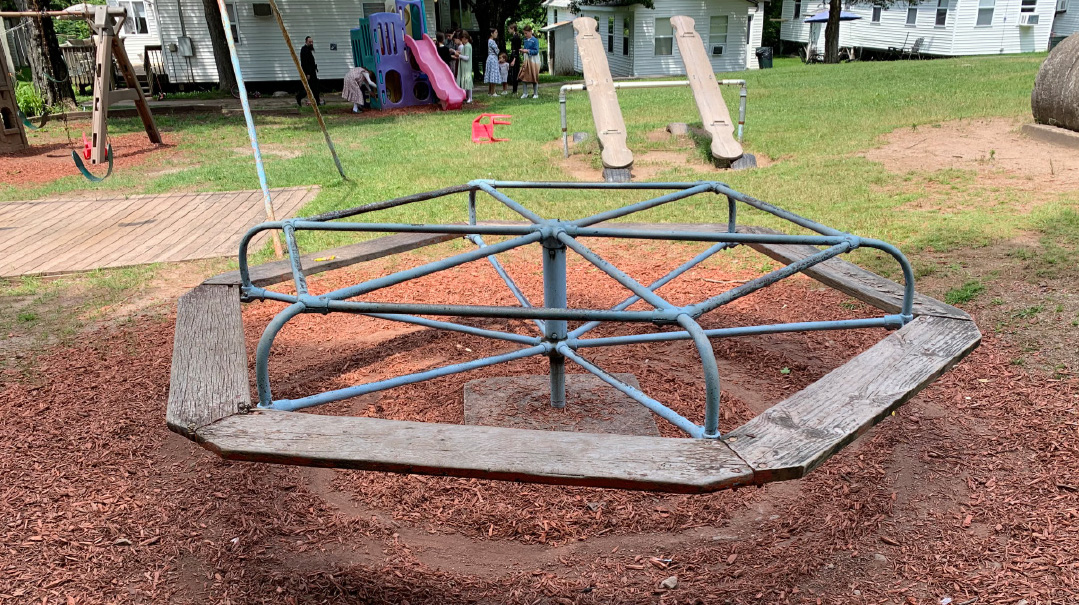
Four Roses today. The manpowered merry-go-round looks much improved since my time
T
he very lack of structure during those lazy summers was the perfect venue for the most effective form of chinuch: role modeling. For although no one told us what to do, or perhaps because no one told us what to do, the adults at Four Roses served as incredible examples for us of what a real Jew looks like. Without naming names, I’ll give a small sampling of who those fathers were (as a boy I focused on the men, but I’m sure the girls had the same experience with the women).
There were at least four maggidei shiur: an Alter Mirrer, a ram at Rabbeinu Yitzchak Elchanan, a ram in a litvish beis medrash in Long Island, and a mesivta rebbi in Flatbush. There was a rosh yeshivah of a heimishe Boro Park yeshivah; a chassidishe Rebbe, whose son has become a famous tzaddik (from his “kepelleh” to his “feeselleh”); one of the most influential members of Agudath Israel; an East Side mechanech who lived in Rav Moshe Feinstein’s building; an owner of one of the most well-known seforim stores in Boro Park; a first-grade rebbi who just retired at age 90; a founding member of Mesorah Publications, a Stoliner contingent — and I haven’t even gotten to the two extended French families and others who embodied what it meant to be true Torahdig balabatim.
Today, Four Roses no longer exists. It was closed by the Health Department, and a while back, a chassidus bought the place and refurbished it. A few years ago, my brother happened to be in the area, and he stopped by just to wander the grounds and see it after all these years. As he was walking, a chassid stopped him.
“You must be one of the Four Roses chevreh,” the chassid told him. “Every two weeks, another person comes to this place and just wanders aimlessly, looking around.”
Been there, done that. That’s the greatest testament to the unforgettable and absolutely beloved Four Roses Bungalow Colony. —
Rabbi Avrohom Neuberger is the rav of Congregation Shaarei Tefillah of New Hempstead, New York.
(Originally featured in Mishpacha, Issue 974)
Oops! We could not locate your form.



